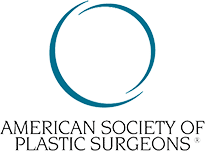The choice of whether to use silicone or saline breast implants remains a personal and individual choice for each woman considering breast augmentation. Silicone implants have not been shown to carry increased risks compared with saline breast implants. In fact, the American College of Rheumatology has issued a statement that silicone breast implants are not thought to cause systemic diseases (see associated article). Similarly, the American Academy of Neurology has issued a simliar statement that they believe there to be no neurological problems which occur due to the fact that breast implants are made of silicone.
Silicone and saline breast implants similarly share the same silicone pouch, or shell, which is the portion of the implant which comes into direct contact with the patient.
After rigorous scientific review, the U.S. Food and Drug Administration (FDA) approved on November 17, 2006 the marketing of silicone gel-filled breast implants for breast reconstruction in women of all ages and breast augmentation in women ages 22 and older. This ended a 14-year ban on silicone implants placed for cosmetic breast augmentation and will now provide more options to first-time patients or those wishing to have revisions from a previous surgery. (see associated article)
Both silicone and saline implants can rupture or leak, although this is very unlikely with either type of implant. A leaking saline implant will tend to deflate, like a “flat tire”. Silicone which leaks from an implant will usually stay confined inside the breast capsule, which is the natural shell created by the body around any type of implant, but may be found outside this capsule in rare instances.
Note: Silicone implants have always and continue to be approved and allowed in the USA, even during the moratorium on “cosmetic” implants, for difficult cases such as when placed for breast asymmetry, at the same time as a mastopexy, if saline implants had formed rippling, if previous silicone implants were present and in all cases of breast reconstruction. No increased complications have been found when these cases were compared to similar procedures performed with saline implants.
The moratorium on placement of silicone implants was only ever present in the USA, and was never present in Europe, Australia or other countries. In these countries silicone implants have continued to remain the overwhelming choice for breast augmentation.
The lawyers associated with the original silicone breast implant lawsuits which bankrupted the Dow Corning manufacturer are still fighting each other over their cut of the proceeds from their lawsuits. (see associated article)
Overall, every woman must make her own personal and well-informed decision on her type of implant. While silicone implants tend to look and feel better, anyone concerned about issues related to silicone implants should consider having the saline versions placed instead.
